 |
 |

|
Cmentarze Sources |
|
|
Visiting the cemeteries and collecting recent information on site was one of the main sources of the information shown here. For some of the cemeteries we found older documentations, which describe the situation as it has been about 25 years ago. |
|
|
EZR Płock 1987: (Ewidencja Zabytków Ruchomych) In 1987 the Lutheran parish of Płock received from the "Biuro Dokumentacji Zabytków Województwa Płockiego" a documentation of the cemeteries in Płock, Bielino, Karolewo and Maszewo Duże. This file came to my hands in 2003 and I was allowed to create a digital version of it's content. |
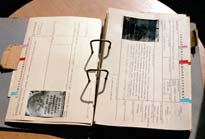 |
|
Jastrzębski/Witkowski 1998: Motivated by their interest in the history of the Płock region Michał Jastrzębski and Artur Witkowski created in 1998 a document called "Cmentarze", describing six cemeteries near Płock. They documented the cemeteries of Podolszyche and Nowe Boryszewo before the gravestones were moved to the Płock cemetery. |
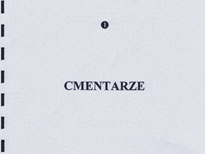 |
|
Marchlewski 1984: Wojciech Marchlewski published in 1984 his thesis about the village of Nowe Wymyśle. The document contains a detailed documentation of the Nowe Wymyśle cemetery in 1984. It shows a plan of the cemetery and gives detailed descriptions of the graves. |
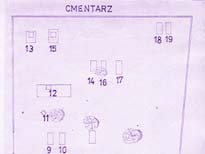 |
|
Szalygin, 2004: "Katalog zabytków osadnictwa holenderskiego na Mazowszu" published by Jerzy Szałygin in 2004. Szałygin gives detailed descriptions of "Holender" villages and mentions cemeteries, their location and condition. But how did we find out about the existence of a cemetery? Maciek Barciński used a very efficient method for finding out about cemeteries. The method could be described as "talking to the village people". |
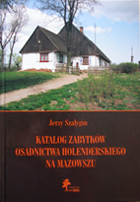 |
|
Other information could be taken from literature and from detailed maps. Very helpful were the following sources: Mielke, 1972: "Schlonsk - Chronik eines deutschen Dorfes an der Weichsel in Mittelpolen" by Emil Mielke, published in 1972. Mielke mentions cemeteries in the area of Słońsk. |
|
|
Polish topographical maps, scale 1:100.000. The "Mapa topograficzna Polski / Zarzad Topograficzny Sztabu Generalnego Wojska Polskiego, Warszawa" has been very helpful in an early phase of the project. Besides tourist attractions and other points of interest, it also shows many of the old cemeteries. |
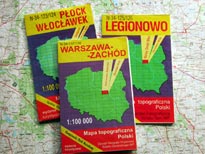 |
|
Contemporary information was found in maps and publications of the early 20th century. Between 1919 and 1939 the Wojskowego Instytutu Geografycznego, the Polish Military Geographical Institute, developed and printed topographic maps for the new Polish state, which were at this time considered to be among the best in the world. |
|
|
Actually these Polish 1:100.000 scale maps were so detailed, that the German administration used them as 1:25.000 blow-ups with only minor changes. The Polish MapyWig Project makes these maps widely accessible by giving free access to excellent scans of these remarkable maps. Many thanks to the founders of this project! |
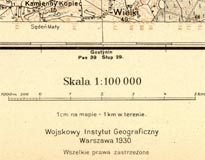 |
|
One of the publications of the early 20th century, which gives information about the existence of small village cemeteries in the Vistula area near Płock, was called the "Evangelisch-lutherischer Weichselbote". It was a small church paper published by Pastor Gutknecht for the Lutheran parish at Gąbin. Later other pastors joined in and wrote articles about their parishes, the parish history and the current parish news. However this paper was only published between 1932 and 1939. |
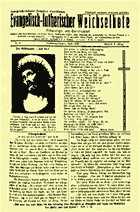 |
|
Gundlach, 1929: "Gedenkschrift zur 125jährigen Jubiläumsfeier der Evangelisch-Lutherischen Kirche in Płock" published by pastor Robert Gundlach in 1929. Gundlach mentions 12 cemeteries located in the Płock parish. Jutta Dennerlein, April 2008 |
|